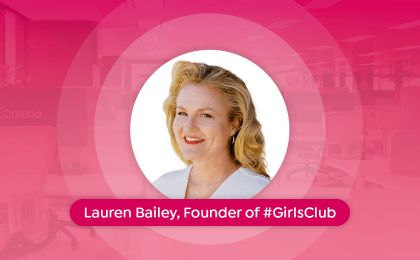Technology giant Google recently found itself embroiled in a controversy over accusations of bias in their hiring process. Without rehashing the situation, the short version is that the company faced some debate about preferential treatment towards specific demographics and diversity. The validity of the argument is a story for another time and place, but it does open up one very important tangential perspective — how can employers be certain that unconscious bias is not affecting their hiring?
The Google story provides a good entry point to examine unconscious bias from two sides. Diversity initiatives are designed to make sure that everyone gets an equal opportunity regardless of background, thus attempting to eliminate unconscious bias against minority demographics. At the same time, the writer of the controversial memo argued that these same diversity initiatives create an inherent bias against people within his own demographic who may be better qualified. Both sides of the argument look at bias in one direction or another as the cause of the problem.
Perhaps, then, the ultimate leveler of the hiring playing field is to rely on tactics like blind hiring. In fact, integrating blind hiring into your hiring process may be the safest and most consistent way to eliminate bias as candidates are evaluated.
What is Blind Hiring?
Blind hiring refers to the process of making hiring decisions without visibility into a candidate’s race, gender, religion, etc., and instead focusing on more objective and predictive criteria, including lists of skills, cognitive ability, knowledge of industry tools, and relevant work experience. This information provides pertinent information to support a candidate’s potential. Other demographic information can create gut reactions in hiring managers and reviewing staff, particularly on an unconscious level (hence the term “unconscious bias”). The result creates conflicts such as the Google situation, regardless of whether the actual issue is real or perceived.
The goal of blind hiring is to eliminate as many layers of unconscious bias as possible. This creates a hiring process that rewards achievements and abilities as much as possible. By viewing candidates through a blind hiring lens, under-qualified candidates will become increasingly filtered out while previously overlooked qualified candidates will have a stronger chance of making it to the next step.
Blinding Your Process
Once you understand the idea behind blind hiring, the next step is to look at implementation. This may be a tricky process due to the number of paths available, and much of that depends on how truly blind you want to make the process — using a real-world analogy, are you taking the glasses off of the hiring process or are you truly blinding it? With that in mind, consider these methods for altering the hiring process:
Blinding the resume
The simplest way to go involves removing identifying information on each resume prior to distribution. Names, dates, and other elements are redacted appropriately to eliminate any unconscious bias based on age, gender, or race.. By blinding the resume, the first step of the hiring process is made objective to any managers reviewing candidates.
Structuring interviews
Interviews will always be part of the hiring process, but when and how they happen can create bias. Having the face-to-face interview too early can allow personal judgments about a candidate come into play based on physical appearance. In addition, open-ended interviews can lead to judgments without any tangible metrics. The best way to blind this part of the process is to delay face-to-face interviews until the applicant has been evaluated across more objective metrics first (resume, portfolio, phone call, then face-to-face), and then during the interview, to use a consistent set of questions and criteria so that every applicant has the ability to answer the same questions.
Use pre-employment tests
Advances in pre-employment screening have created opportunities to measure both technical skills and cognitive abilities (i.e. problem solving, creativity, critical thinking). The latest technology makes it easier to screen en masse as applicant-to-hire ratios surge, giving companies blind results for both data gathering and as a first-pass filter on talent.
Blind hiring has been a growing trend for a few years now, but the recent Google controversy reignites the need to incorporate hiring practices that minimize bias and encourage diversity. As the whole Google debate centers around being too biased one way or another, companies can turn to blind hiring as a means of protecting themselves from such accusations in any direction, all while innovating further to truly maximize talent acquisition.
(This article originally appeared on HR Trend Institute.)





